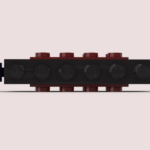Lotus’ all electric hypercar gets the Lego treatment but is it a fun build?
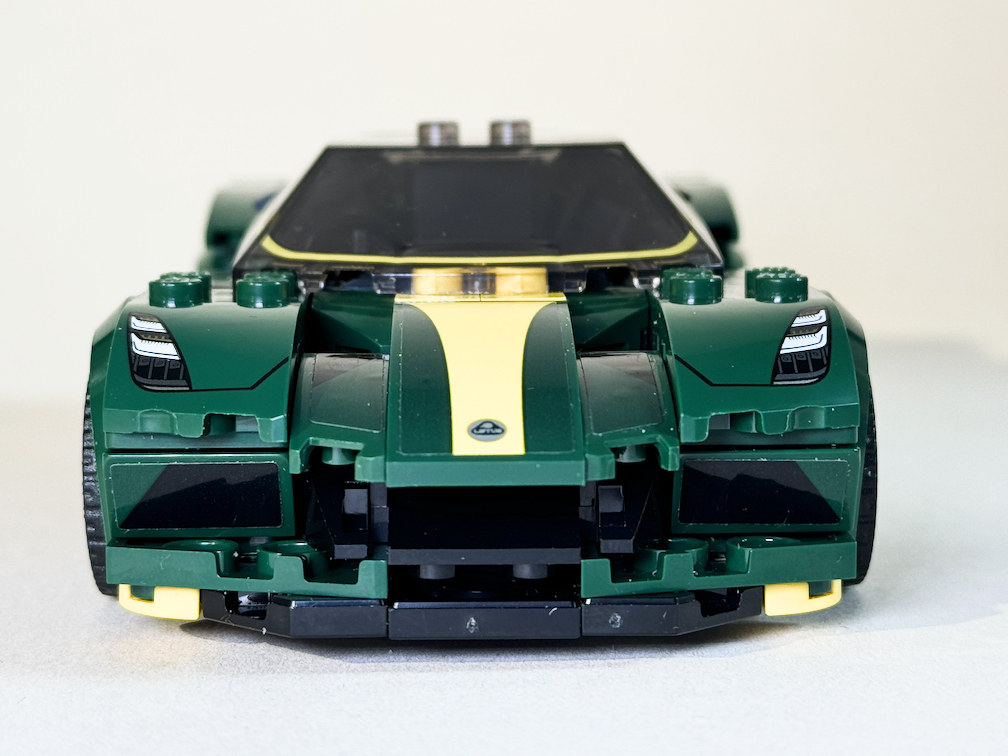
With only 130 made and a price tag of £2.4 million I was never going to get one so I had to settle for the Lego reproduction, and while it may not be as fun as driving a real one, it was a fun build with some really interesting techniques.
With 247 pieces spread over two bags it wasn’t a huge or challenging build, it took about 30 minutes. The first bag created the rear of the car with some interesting tricks to mimic the Evija’s unique looking brake light style, and while I don’t think it managed to recreate it very well, it did manage to create something interesting instead. The Evija has a very organic, fluid design to its body shape and those sorts of things rarely translate well to Lego, so I can’t really criticise the designer for how they worked it.
I was impressed with the technique of using 2×2 hinge plates in a reversed orientation so they couldn’t hinge but instead make the trans-red 2×1 plates look as though they’re floating. A very nice technique. At the back, you’ll find a lot of 2×1 curved slopes trying their best to recreate the curves of the Evija.
It was also nice to see the snowboard spoiler making a comeback, this time in a rare dark green, which is only available in 2 other sets (a 2022 advent calendar, and a Lego shop gift pack). Dark green is a great looking colour, and perfect for a Lotus in British racing green.
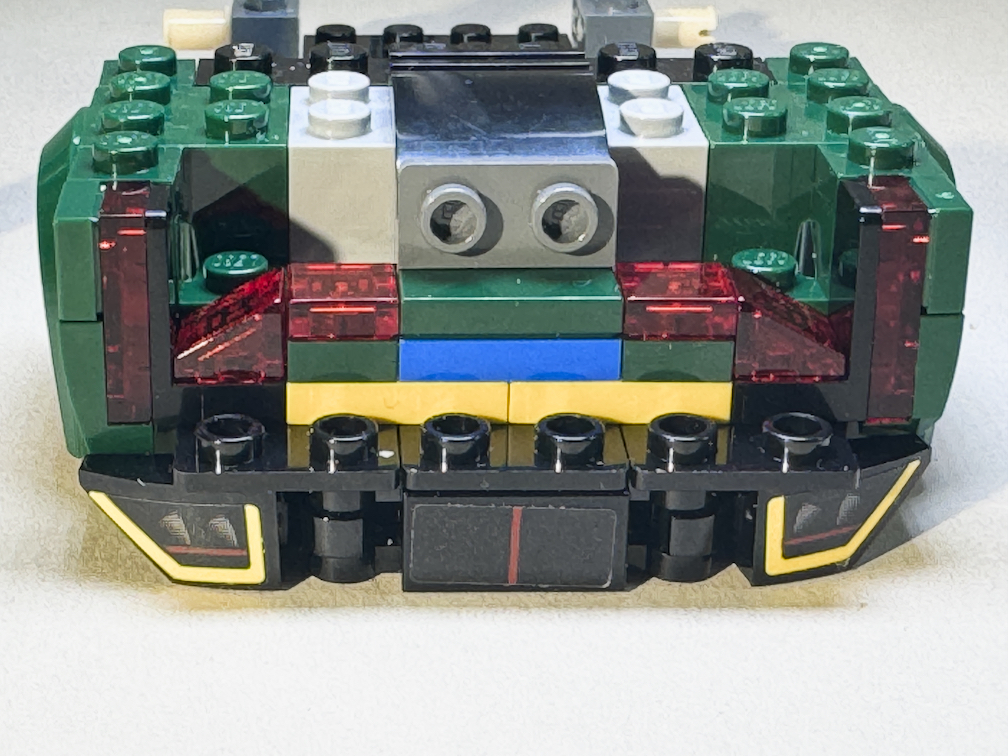
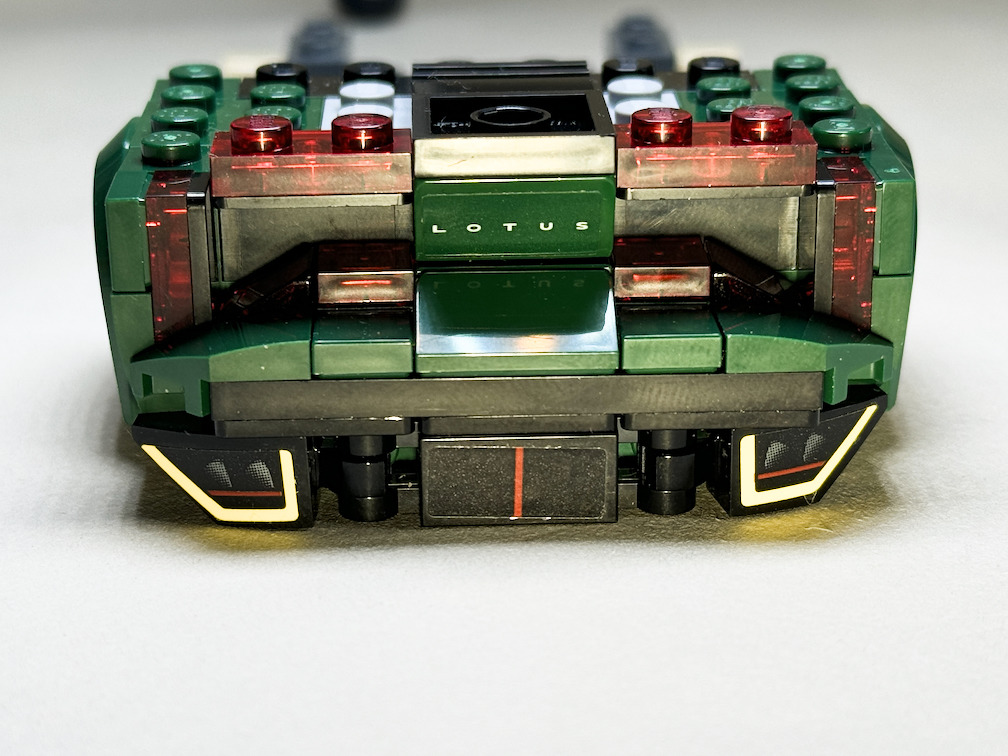


The back is finished off with a trans-brown hexagonal windscreen with a Lotus print, and with the addition of stickers to the other tiles around it the flowing yellow highlight makes the back looks great.
Bag two is dedicated to the front of the car, and again there are some clever building techniques even if the end result misses the mark a bit. The reversed 2×2 hinge plate technique makes another appearance, this time holding some jumper plates above the hinge for the hood of the car but one of the reasons I picked up the set was to find out how the front spoiler was attached as I noticed it on the box art that it was attached upside down somehow. The answer is that it’s held on with two ball and socket joints that can’t move. A similar technique was used to hold the stern of the Lego Titanic in place and a trick I always love to find in models.
There’s another huge trans-brown Lotus branded windscreen piece that carries the yellow highlight from the front up and over the car to the rear of the car and from the car looks amazing from the front with the gap between the spoiler and the hood giving the car a mean look.
The front lights have the other two printed pieces – 3×2 curved slope with notch. I guess I get disappointed with printed parts – which I guess is a controversial opinion – because it means it’s harder to use the in other MOCs, but I can understand why the unique looking lights needed to have a print.

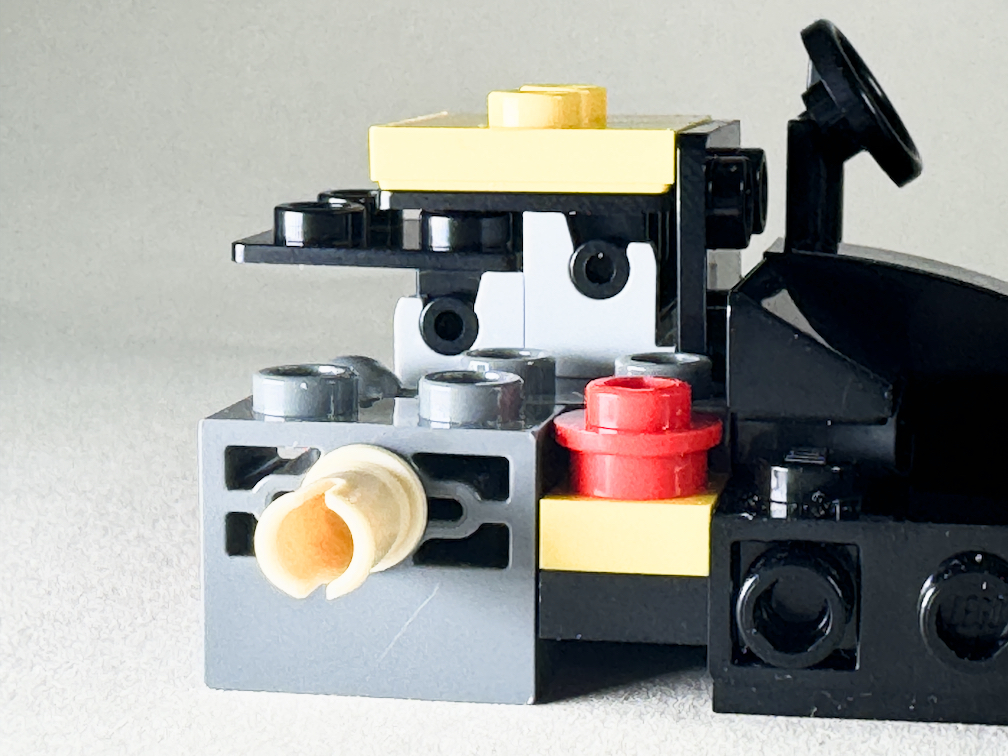
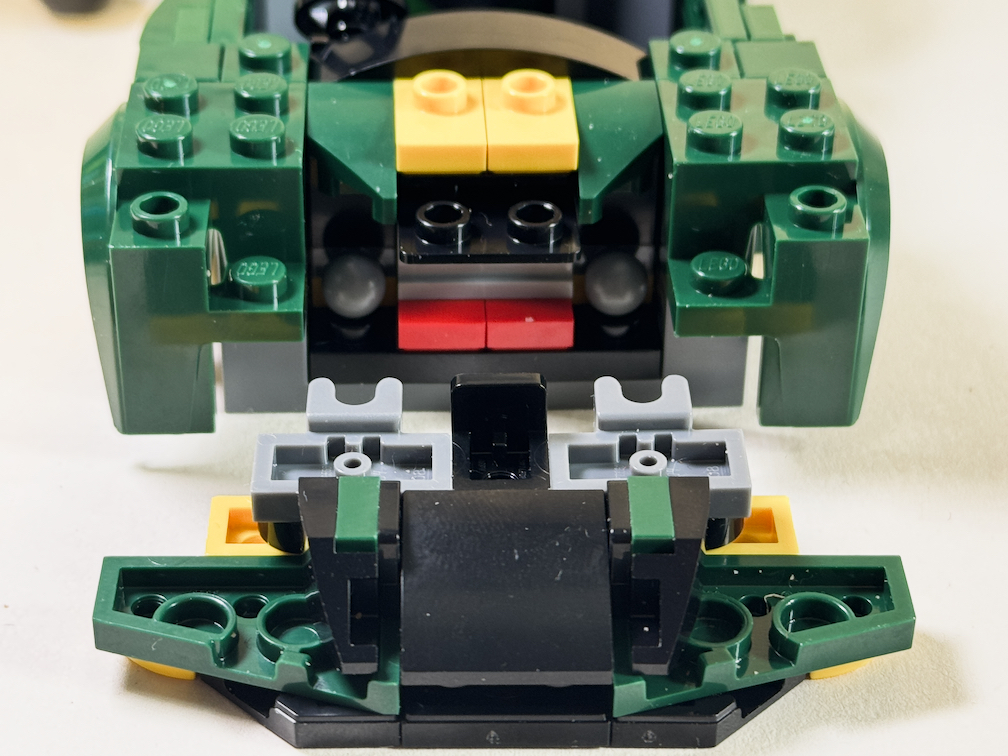

The final part of the build is the sides, the doors and the massive air scoops at the back, and there is some nice SNOT work to achieve this look even if some of the pieces don’t feel like they’re attached as securely as I’d expect, although a bit of force didn’t seem to knock any loose.
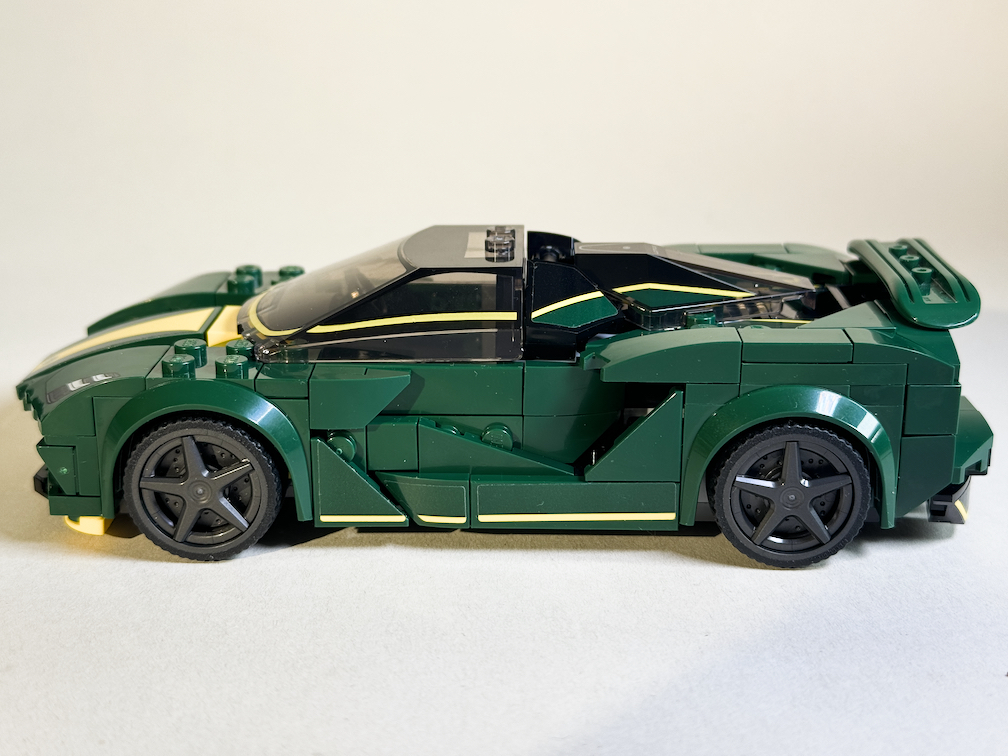
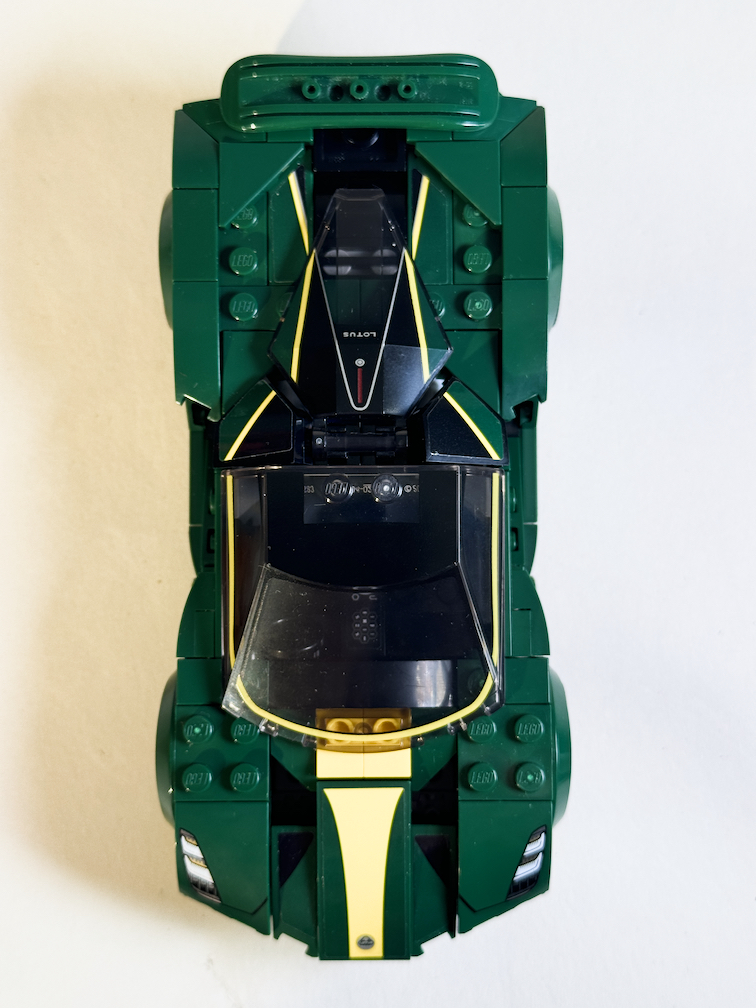
All in all, this is a really nice looking car even if it doesn’t quite have the look of an Evija. The real Evija feels sleek and smooth curves, whereas this Lego model feels quite bulky and more like a normal car boxy car with some rounded edges, and as I got it for half-price in a sale I feel I got a good deal.
